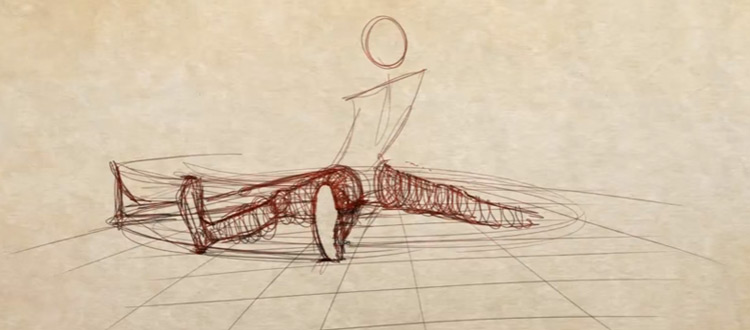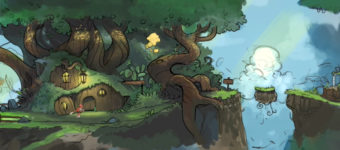Why Is It Important To Practice Fundamentals First?
The single piece of advice consistently paraded to new artists centers around a vague concept of “the fundamentals”.
Every professional artist will recommend that new artists start by first learning their fundamentals. This is very astute advice. Form, value, perspective, proportion, gesture… these seem like scattered terms but they all relate as building blocks for almost every drawing.
Below I’ve copied a chart from this Sycra video talking about the fundamentals. Along the X axis you’ll see general career paths, and the Y axis lists different fundamental skills.
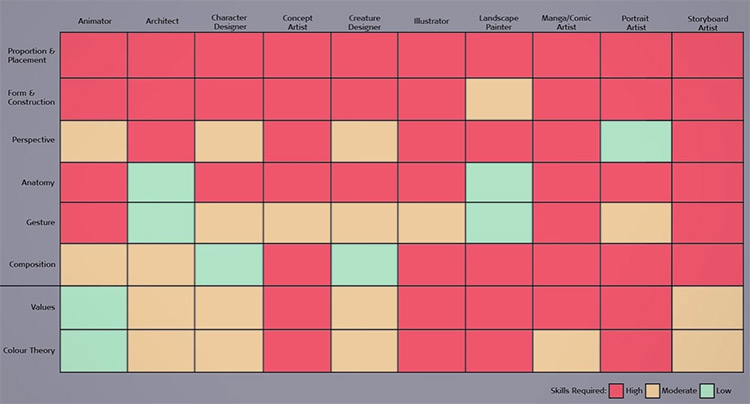
Granted this is not some official chart put out by the industry giants, so take it with a grain of salt. But there’s a lot of truth to this graph and it leads to the point of this article: fundamentals matter.
This is all well and good but why do they matter so much? What actually are the primary fundamental skills? And why does every entertainment artist need to learn them?
I hope to answer these questions and provide some learning resources to get you started on the right path.
What Are The Fundamentals?
Great art follows basic fundamental concepts about mirroring how reality looks. It’s hard to nail down exactly how many fundamental topics there are, but you will often hear a few terms repeated constantly.
- Line
- Form
- Perspective
- Light & value
These are four very common principles with others like composition and proportions being included too. Every skilled artist uses these fundamentals whether knowingly or not.
You don’t necessarily need to master the topic of perspective to draw something in perspective. But if you study perspective it’ll help you learn faster, and you’ll draw with conscious knowledge rather than a gut feeling of “it just looks right”.
Another brilliant example is the complex nature of light.
Topics like cast shadow, core shadow, halftones and reflected light all describe how light makes different values when it falls upon anything. People, buildings, objects, everything is seen through light and these effects can be scientifically understood to improve your art.
If you want to learn more about light & value there’s no better book than How To Render by Scott Robertson.
His first book titled How To Draw is also great for understanding line quality and the basics of perspective.
Note that you can practice the fundamentals without reading any books. You could just draw objects until you learn to copy shadows accurately.
But having the underlying knowledge of light and how it behaves is required for you to draw & paint from imagination, which is vital for a concept artist or animator.
The toughest part is explaining to beginning artists that fundamentals will be understood better as you practice. Saying this isn’t enough; you really need to experience it to believe it.
You can take time to solely study perspective with a book like Perspective Made Easy by Ernest Norling. This will focus your attention on perspective rules and practice techniques.
But if you did free Proko videos or simply drew objects around your house you’d also be forced to practice perspective. It’s absolutely fundamental to every piece of art. You simply cannot create polished works of art without using perspective whether knowingly or not.
This is the truth behind “the fundamentals” and how they work. These subjects will apply to every art job in the entertainment industry so you’ll want to learn them one way or another.
The Fundamentals In Practice
How do fundamentals apply to your artwork? Why should you study these concepts if you want to do entertainment design/concept art?
The goal as an artist is to always improve. When you first start there’s basically no wrong way to go because you need to improve every single skillset. As you get better you’ll notice some of your skills are lagging behind others.
For example, you may study anatomy and fully understand major muscles of the human body. But if you keep drawing stiff poses you’ll never be able to capture that anatomy in creative ways.
In this scenario you’ll want to practice more gesture. You might grab a decent anatomy book or follow video lessons like the Proko anatomy series.
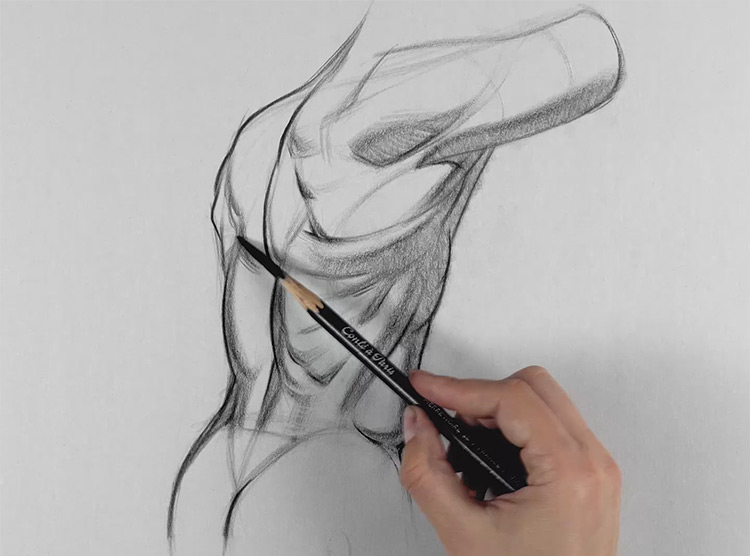
Either way your goal is to become a well-rounded artist in all fundamental areas. You want to become conscious of what you lack so you can work to improve.
If your perspective is off then you’ll never be able to draw a human body in proportion. Foreshortening is just one aspect of perspective that’s vital to a successful drawing.
People who draw a lot will internalize the concept of foreshortening. They may not even know there’s a term for it, but they can draw it well. You’ll improve much quicker if you know why something happens and if you can draw it accurately.
Quick tip: if you’re looking for help with foreshortening check out Sycra’s coil technique.

This example is from an FZD term 2 project focusing on environment perspective art. A top-down corner view shows everything and involves drawing at a very specific angle.
With knowledge of perspective it’d be easier to recreate this room from any angle. A great concept artist should be able to do that without too much effort. It is certainly hard work, but it’s by no means impossible.
Once you understand the basics like perspective you can build on top of it with other skills. This is how you grow and truly improve as an artist—but it all starts with learning the fundamentals first.
Drawing vs. Painting
Most artists start with drawing first because it’s simply easier to work in one value. Painting is much trickier regardless of medium. Whether traditional or digital painting you still need to worry about colors and blending appropriately.
But painters also need to worry about all the fundamentals including perspective, lighting, form, and value(with color).
This is why every new artist should excel at drawing first. You can learn all the raw fundamentals by drawing from life and attempting to copy other artists. I always recommend the Proko figure course because it genuinely is that good, especially for beginners.
Stan Prokopenko teaches you how to draw the figure with constructionist techniques and gesture drawing. But this practice also improves your understanding of line, tone, and perspective.
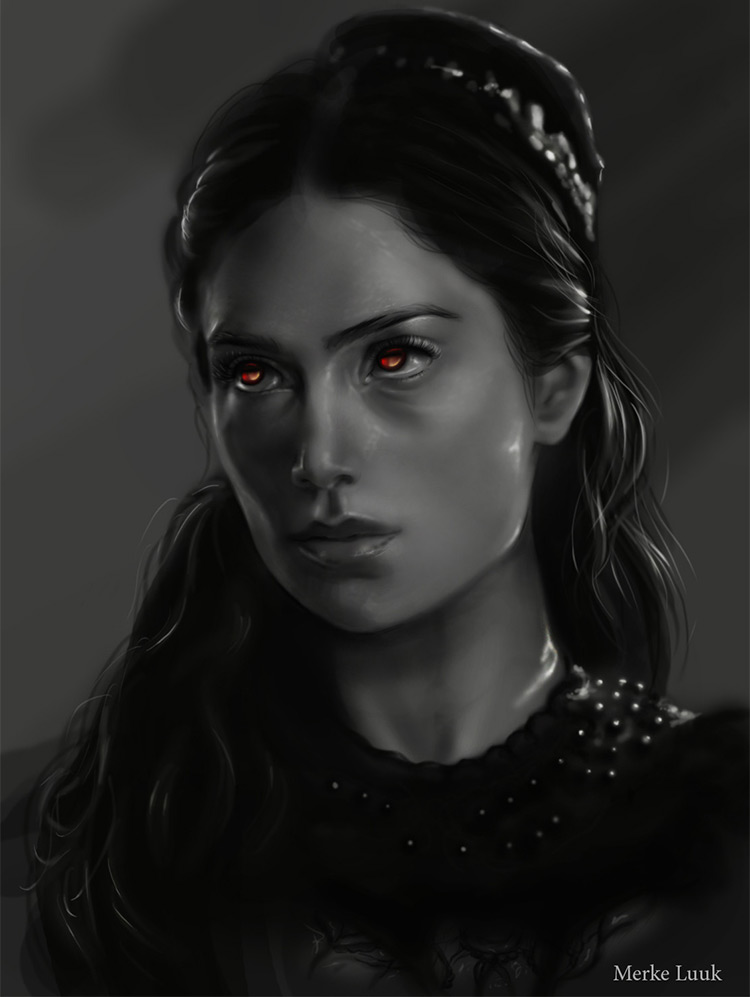
Check out the example above from the artist Merke Luuk. It’s not meant to be a finished piece, but rather a value study. See how the tone, value, and light still appears realistic even without color?
This work shows an understanding of value. Everything you do in color should be able to work in black and white too.
Always start your art career with drawing first. You can still improve if you start with painting, it’s not a complete abomination to dive into painting headfirst. But you’ll have an easier time learning to paint if you practice fundamentals with drawing first.
Practice Resources
Each fundamental topic has a lot of information that should be internalized by understanding and by practicing. What you understand in your head will affect how you draw, so you’ll want to spend time researching and practicing simultaneously.
But with so much to learn it’s easy to feel overwhelmed. The best thing you can do is just start somewhere. If you really want to improve your understanding of forms then focus on the basic shapes: spheres, cylinders, and cubes.
Drawabox has great exercises to get you comfortable with basic forms.
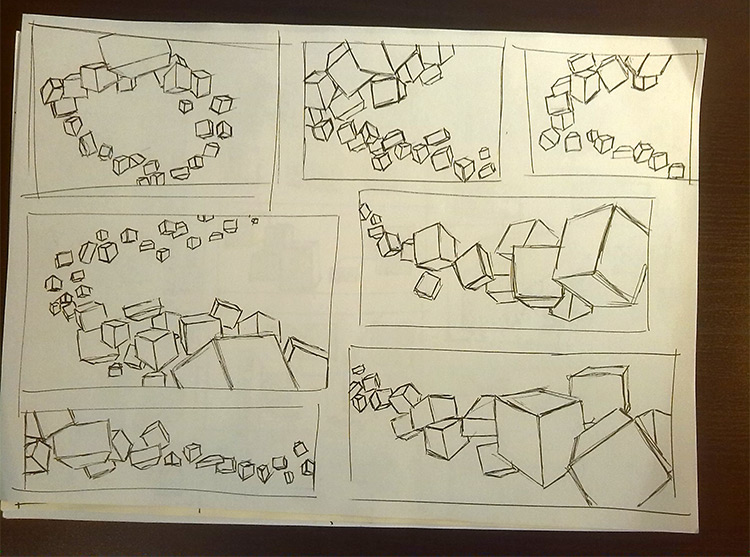
If you’d rather practice perspective then follow whatever lessons you can find. There’s lots of free stuff on YouTube and plenty of perspective books as well.
Tone, value, and light/shadow is a trickier subject to start with. It is absolutely vital but it’s tough to solely focus on value before you understand basic concepts like form.
My suggestion is to start with a lesson plan that teaches you one fundamental at a time. But the more you practice everything the more well-rounded your skills will become. Eventually you’ll realize which areas need more TLC.
I always recommend the Proko lessons for this type of study because they just work. He does release free videos on his YouTube channel but they’re clipped, and you only see 1-3 videos for each section of his course.
If you need a regimented practice routine I cannot think of anything better than the Figure Drawing Fundamentals course. It covers form, perspective, gesture, life drawing and sculptural/constructionist drawing with exercises that you can practice every day.
Also, do lots of studies!
Following a lesson plan is hugely important and it’s why I recommend the Proko stuff so much. But try to make your practice time fun as well.
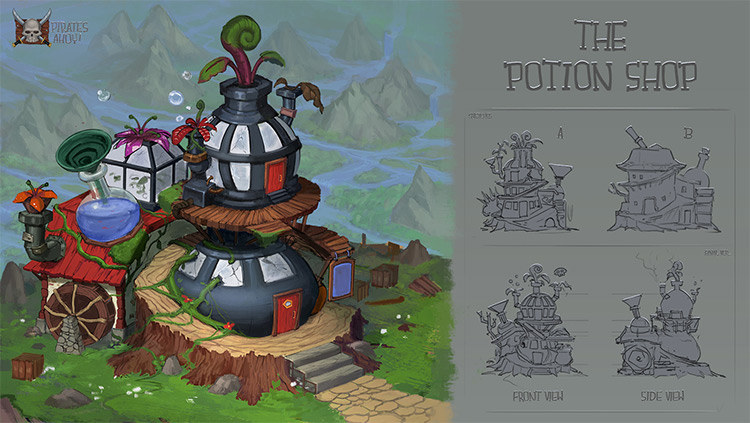
The more you perform life drawing studies the more you’ll be forced to think critically about your own work. This is how you really grow as an artist so you should never be afraid to step away from the lessons and just try something new.
Focused practice is always better than doodling.
As long as you know what you’re trying to draw then you’re on the right track. Whether you’re practicing form, perspective, gesture, or all of them together, the biggest factor in learning the fundamentals is that you just keep practicing.


